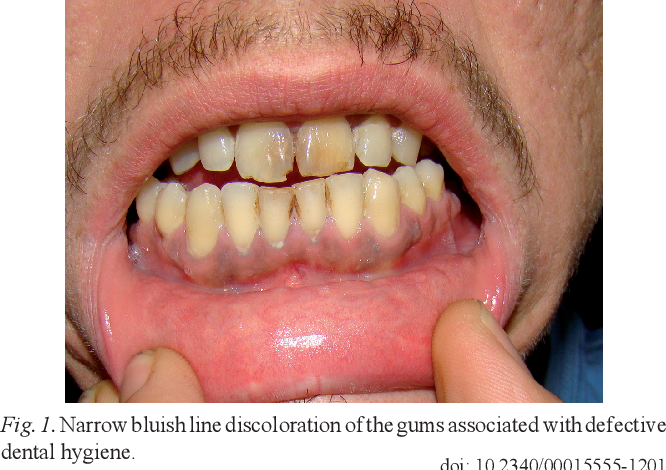- Sources of exposure
- Battery manufacturing, metallurgy
- Drinking water (contaminated by lead plumbing) or contaminated sources
- Lead-containing paint (common source of exposure in children) from:
- Antique or imported toys
- Walls of older homes (houses built before 1978 may still have lead-based paint)
- Pathophysiology: inhibition of aminolevulinate dehydratase and ferrochelatase → heme synthesis disruption → ↑ protoporphyrin and ↑ aminolevulinic acid in RBCs
- Clinical features
- Nervous system
- Polyneuropathy, encephalopathy, headache, fatigue, muscle weakness, paresthesias, delirium, seizures
- Demyelination of peripheral nerves→ peripheral neuropathy → paralysis of muscles supplied by the radial or peroneal nerve (wrist/foot drop)
- Cognitive impairment, memory loss
- Kidneys: nephropathy
- Red blood cells: symptoms of anemia
- Other:
- Purple-blue line on the gums (lead line or Burton line)

- Severe abdominal pain (lead colic)
- Constipation
- Treatment of lead toxicity
- Decrease exposure
- Chelation therapy indications:
- Oral succimer with/without intravenous or intramuscular CaNa2EDTA (calcium disodium ethylenediamine tetraacetic acid)
- IM dimercaprol (British antilewisite, BAL) with/without CaNa2EDTA
- Patients with lead encephalopathy
